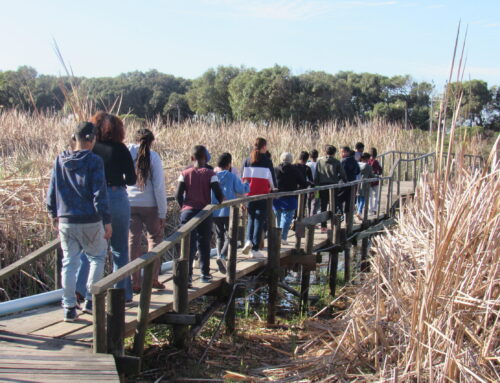Written by Fayruz Prins
Imagining elephants walking around in Cape Town CBD today may seem unrealistic. However, historically elephants roamed the Cape Floristic Region. As of 2022, the closest African elephant has been reduced to 1 lone female (Oupoot) roaming the Knysna forest, in the Garden Route area of South Africa. With an unclear future, Oupoot walks the paths of her predecessors solo. Let’s help Oupoot and many other elephants this World Elephant Day on the 12th of August.
Nature Connect is rallying together with other organisations and taking part in this year’s World Elephant Day by spreading awareness for this magnificent species and raising the issues threatening elephants. We support the efforts for conserving elephants, other wildlife, and their habitat for future generations.
Looking into the eye of an elephant evokes a connection to its soul. Their eyes are like windows to a world of wonder and wisdom.
Much like us humans, these large mammals are highly sensitive and caring, showing emotions, feelings, and compassion. With complex cognitive intelligence and being highly sociable, they’re able to learn, use tools and cooperate in complex tasks while also showing self-awareness. Their intricate social structure plays an important role in the herd as they bond, similar to the love, protection, and emotional connection we have in our families. The family unit can be made up of 6-20 females and calves with allo-parenting ensuring the calves are provided with the utmost care, guidance, and support while being led by a matriarch who holds the most wisdom and leadership in the herd. Females generally stay in the herd and continue to pass down generational knowledge to the younger members, whereas males leave the herd once they reach sexual maturity and form smaller bachelor groups or roam in isolation.
Elephants have well-developed communication systems by using all their senses, including an exceptional ability to detect vibrations. They do this through seismic signals which are vibrations they pick up in their bones from the ground. We often see how they communicate through body language when they caress one another for comfort and soothing, which strengthens their bond. They’re able to convey information about their physiological and emotional state while also relaying specific messages about their desires and intentions. Their capability of expressing thought and emotion through acoustics is significant for sharing ecological knowledge in the herd. Their trunks are multifunctional extensions of the upper lip and nose used for grasping, trumpeting signals, breathing, and retrieving water, and is one of the essential ways they communicate with one another. It’s made up of over 40 000 muscles with great dexterity allowing them ultimate control for even the slightest touch. Both male and female African elephants grow tusks which are in-fact extensions of teeth that grow as they age. Their tusks are mainly used for striping bark from trees, digging up roots, and for defence. Just as we are left/right-handed, they too have a preference to use either their right or left tusk, which is then often visibly smaller compared to the other from frequent use. Sadly, their ivory tusks often put elephants in grave danger of being poached.
These majestic beasts are well adapted to their environment. The majority of their skin is about 2.5cm thick, and the folds and wrinkles more prominent of African Elephants can retain up to 10 times more water than flat skin which helps regulate their bodies in the heat. Their large floppy ears are like air cons with thin blood vessels close to the skin that assist in releasing heat but also as a fan to cool down the body.
Elephants are symbolic creatures of the African continent being part of our well-known “big five”. However, there are three species of elephant in the world with one of them distributed in Asia. Namely, the Asian elephant (Elephas maximus) is characteristically different from the African Savanna (bush) elephants (Loxodonta africana) and African Forest elephants (Loxodonta africana cyclotis) as having smaller ears, somewhat shaped like the Indian sub-continent, with only the males growing tusks and inhabiting forest and grassland habitats. Whereas, African elephant ears are larger and shaped like the African continent and live in open-wooded savannas, grasslands, and forests. African elephants are the largest of the species and can weigh up to 6 000 kg. Even the calves are born at 120 kg! They are known to live up to the ripe age of 70 years in the wild, only reaching their full size at around 35 to 40 years.
One of the most magnificent roles elephants play is driving ecology by being ecosystem engineers. They sculpt the landscape through which they move and create pathways through thick vegetation for smaller animals. Their large foot imprint can also create a micro-habitat when filled with water, which is perfect for different types of invertebrates.
However, we are living in an era where elephant numbers are declining at a rapid rate. Once common throughout Africa and Asia, they are now confined to pockets of remaining suitable habitat. The leading threat to African elephants (listed as endangered on the IUCN Red List) is the illegal ivory trade, as their tusks are valued for cultural significance. Their population has severely reduced from 12 million only a century ago, to 415 000 left in the wild. A major decline was seen in the 1980s when approximately 100 000 elephants were killed each year for hunting, resulting in up to 80% of herds lost in some geographical regions. African Forest elephants (listed as critically endangered) have faced the worst decline of up to 95% in the last 100 years, and currently less than 100 000 are left in the wild. Oupoot being the last of its kind in the Knysna Forest, is a testimony to the tragedy elephants are facing. Today, around 50% of forest elephants occupy forests in Gabon, with only 13% being suitable habitat. While only 20% of the population inhabits the Democratic Republic of Congo, despite it covering 62% of Central Africa’s forest habitat, meaning the majority of the area is absent of elephants.
As the human population increases, so does our need for food production which starts by occupying land for agriculture. Development and economic growth have led to expanding settlements, roads, and fencing, all major threats encroaching into elephant habitat and inhibiting their ancient migratory routes. Asian Elephants (listed as endangered) are highly threatened by habitat loss and human-elephant conflict as their habitats are reduced, causing 70% of elephants to roam outside of protected areas. Elephant encounters therefore become more common as they raid crops, which leads to humans retaliating, often with lethal outcomes.
These threats have led elephants to be confined to small pockets of suitable habitat which creates a high risk of inbreeding, disease, and extinction due to natural disasters. In 1989 the Convention on International Trade in Endangered Species of Wild Fauna and Flora (CITES) signed an agreement between global governments to ban or regulate the trade in elephant ivory. However, elephants under protection in suitable habitats are still poached for their tusks and illegally traded. As a result of the poaching pressure, more elephants are being born with the genetic tuskless gene due to the liability their predecessors have faced. We may be witnessing the tragic evolution of tuskless elephants as the pressure for ivory tips the scale of natural selection for these vulnerable animals.
Fun facts!
Elephants never forget! Due to their large and dense temporal lobe.
Elephants have the longest gestation period of any mammal, 22 months!
Today we want you to honour elephants in every way possible by:
- Sharing this article with everyone you know and tweet #WorldElephantDay, #BeElephantEthical
- Pledging to support elephants and other wildlife and their habitat on World Elephant Day
- Host a screening day for When Elephants Were Young documentary
- Donate to the many organisations across the world working to save elephants
- Donate to elephant research projects
- Support elephant conservation
- Protect habitat for wild elephants
- Do not support places that exploit elephants
- Do not buy ivory or other wildlife products






